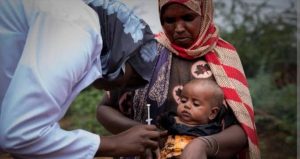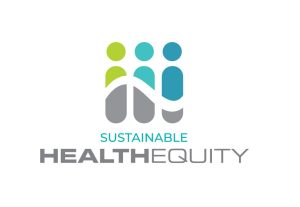IN A NUTSHELL Editor's NoteThis article turns the spotlight on what rabies scourge means for India, whereby past and present efforts to eliminate dog mediated human rabies by 2030 are reviewed under critical lens. As the Authors maintain ‘...What the country needs immediately is a dog population policy Vis –a–Vis human safety, dog welfare and rabies elimination. The magnitude of the problem is huge, demanding high fund allocation, serious political and bureaucratic commitments; and finally legal approval is crucial to its success. Till this is achieved, the goal of zero by 30 will remain a pipe dream...’

By Prof (Retd) Dr. M K Sudarshan
Founder President and Mentor, Association for Prevention and Control of Rabies in India (APCRI)
Bengaluru, India Email: mksudarshan@gmail.com

Prof Dr. Tanushree Mondal
Editor Association for Prevention and Control of Rabies in India (APCRI)
Kolkata, India Email: profcmrgkmc24@gmail.com
Eliminating Dog Mediated Human Rabies from India by 2030: a Pipe Dream
The World Health Organization (WHO) along with World Organization for Animal Health (WOAH), Food and Agriculture Organization (FAO) and Global Alliance for Rabies Control (GARC) in 2015 launched the goal of eliminating dog mediated human rabies by 2030 or zero by 30 in short (1). Globally every year about 59,000 human rabies deaths are being estimated to occur of which 20,000 (34%) is from India alone (2). But a recent national multicentric rabies survey done in 2024 by National Institute of Epidemiology, Chennai, Indian Council of Medical Research, have revealed a figure of 5,726 human rabies deaths annually (3), a reduction by about one–fourth as the earlier figure is 20 years old. Hopefully, this figure of 5,726 soon becomes the official figure of India. Still achieving the goal of zero by 30 in the coming five years is extremely challenging, utopian and nearly impossible.
However, in the last two decades good improvements have happened like discontinuation of Semple vaccine (outdated sheep brain vaccine,2005); introduction of intradermal rabies vaccination (IDRV,2006), improved usage of rabies immunoglobulins (RIGs), recent introduction of rabies monoclonal antibodies (RmAbs,2017&2021) and overall socio-economic improvements in the country that have enabled people to access these rabies biologicals available in the hospitals, that are now more closer to the populations and with better travel facilitates.
Rabies and the dogs
The current estimate of human population of India is 1,450 million, thus becoming the most populous country in the world, over taking China with a population of 1,400 million in 2024. In India, 97% of human rabies deaths are after exposures to dogs, and up to 60% of these are due to free roaming dogs or stray, or street dogs as commonly referred to by the common man. There are an estimated 95 million dogs in India of which 62 (65%) million or nearly two-third are street dogs and 33 (35%) million or about one-third are pet dogs. It means the dog – human population ratio is 1: 15; 1: 22 for stray dog and 1:43 for pet dog. Thus, the potential reservoir of infection of rabies, the dogs live close to humans and exposures via lick, scratch and bite are responsible for the transmission of rabies infection to humans. A recent national multicentric rabies survey done by Indian council of Medical Research revealed about 7.0 million dog bites annually (3). This huge burden of dog bites in the country calls for urgent attention to ensure lifesaving rabies post exposure (or bite) prophylaxis to all bite victims.
Figure 1: A pack of street dogs, often seen in many cities of India
It is important to note that rabies is practically 100% fatal once the symptoms appear in the exposed individual and as the death is quick & soon in a week’s time in the vast majority and often painful, it is a terrifying condition.
Stray dogs in India
The story of Yudhishtir and the dog is a famous episode from the Hindu Mythology, Mahabharata that highlights Yudhisthir’s unwavering commitment to dharma (righteousness). During their journey to heaven, Yudhisthir’s brothers and wife die, leaving him with a faithful dog. At the doorstep of heaven when Indra, God of heaven, offers Yudhishtir a place in heaven but insists the dog cannot enter, Yudhishtir refuses to enter, demonstrating his dedication to the faithful dog. The dog is then revealed to be Dharma (or Yama) in disguise, testing Yudhisthir’s virtue. Subsequently Yudhishtir enters heaven. Besides in certain parts and communities of the vast and plural India, dog is considered a companion, divine form and even worshipped. The dog is also known for its unflinching loyalty and faithfulness to its masters and hence, the most popular pet in the country, of course even globally.
The estimated population of 62 million street dogs in India is colossal and these are presently beyond the ambit of effective management by the city municipal corporations that are starved of resources, leaving aside the vast rural areas that constitute about two-thirds of the country. A beginning was made in 2001 by introducing the animal birth control (ABC) rules (supersession in 2023) under the prevention of cruelty to animals (PCA) act, 1960 (4), that was simply the catch – neuter- vaccinate – release (CNVR) guidelines of WOAH. But with meagre budgets, poor veterinary infrastructures and facilities, grossly inadequate veterinary manpower and above all with no political and bureaucratic commitments, it hardly made any impact. Also, it was opposed and resisted by the communities as evidenced by their opposition to release of the neutered dogs back in their areas under the ABC or CNVR programme. There was poor monitoring of the ABC/CNVR programme and the outcome was poor coverage, lack of accountability and resulting in wasteful expenditure of public funds.
Figure 2: Street dog caught with a butterfly net for CNVR (or ABC) Programme
Besides the stray dogs often when aggressive attack the children maiming and even killing them; severely injuring the elderly, weak and disabled, their sudden attacks on drivers of motor vehicles, particularly those of two wheelers who meet with even fatal accidents. These instances often divided the populations into two groups, one group of people supporting stray dogs or known as “dog lovers” and the other opposing and vociferously demanding their removal from the streets known as”human rights activists”. Even the media both print and electronic took sides based on the circumstances and other considerations. These led to heated debates in the states legislatures, national parliament and also resulting in innumerable litigations in various courts of the country including high courts in the states and Supreme Court at the national level. The animal welfare organizations (AWOs) and activists who took up the cause of saving the street dogs are being mostly rich, influential like cine and sports stars and from higher echelons of the society often leading to huge media coverage, thus obscuring the suffering of the victims of the stray dogs who are largely the poor and voiceless.
Initiatives by the Government
Despite the ongoing Covid -19 pandemic though delayed, taking cue from the 2015 global goal of zero by 30, Government of India launched the national action plan for rabies elimination (NAPRE) on 28th September, 2021 (5). This has broadly a three-pronged approach, improving the coverage of lifesaving rabies post-exposure prophylaxis (PEP) for the animal bite victims, mass dog vaccination (MDV) and public awareness campaigns. For ensuring elimination of rabies from a given area it is essential to have 70% annual vaccination coverage of dogs for three consecutive years. This is a herculean task in the given circumstances. Besides, under the Indian constitution health is the subject of the state government (or provincial government) and also urban civic bodies or municipal corporations or local self-governments governing the cities. Sometimes, the union or central government, state governments and city municipal corporations or local self-governments might be under different political parties that not only complicate but also delay the decisions and actions that follow. Consequently, under the NAPRE, the states that were to develop state action plans and act are slow and poorly responsive. Hence, in 2024 another program of Rabies Free Cities (RFC) initiative has been started to focus and accelerate rabies elimination activities in the cities, that is considered possible and hence, doable. But in a huge and diverse country like India, unless the program is 100 % centrally sponsored (completely financed by Government of India) and implemented under a “mission mode” like the smallpox eradication programme and polio elimination programme, human rabies elimination will not be possible, more so as it is a zoonotic disease unlike the other two were anthroponoses (humans to humans transmission only) and were much easier than rabies.
The Supreme Court of India
A recent twist in the ongoing processes, on 11h August, 2025 a two judges bench of the Supreme court of India based on the newspaper report of children being victims of stray dogs in Delhi took up this cause very seriously and issued an order that all stray dogs from certain parts of New Delhi be removed from the streets and sheltered outside of Delhi and managed. This led to public unrest and intervention by the chief justice of India who constituted a new three judge bench to address the issue. This bench met on 14th August, 2025 and after due deliberations issued an order on 22nd August, 2025 (6) with some modifications of the previous order and recommended continuation of the CNVR or ABC programme with certain conditions. Besides this new order is now applicable not only to New Delhi but to the entire country ensuring more accountability and transparency. Even the much controversial feeding of stray dogs is to be disciplined with some guidelines to follow soon.
What next
The approach to rabies control is multi-sectoral and very challenging. Presently, there is poor coordination not only between the different sectors like health, animal husbandry and environment, but also within the sectors. Also, the issues of governments of central, state and local municipal corporations that are often run by different political parties have further divided and complicated, and delaying achieving the goal of zero by 30.
What the country needs immediately is a dog population policy Vis –a–Vis human safety, dog welfare and rabies elimination. The magnitude of the problem is huge, demanding high fund allocation, serious political and bureaucratic commitments; and finally legal approval is crucial to its success. Till this is achieved, the goal of zero by 30 will remain a pipe dream.
References
- World Health Organization. Zero by 30: the global strategic plan to end human deaths from dog-mediated rabies by 2030. [accessed on August 15, 2025]. Available from: https://www.who.int/publications/i/item/9789241513838
- World Health WHO Expert Consultation on Rabies: Third report. World Health Organization Technical Report Series 1012, WHO: Geneva, 2018.
- Thangaraj JWV, Krishna NS, Devika S, Egambaram S, Dhanapal SR, et al: Estimates of the burden of human rabies deaths and animal bites in India, 2022-23: a community- based cross-sectional survey and probability decision-tree modelling study. Lancet Infect Dis. 2025 Jan;25(1):126-134. doi: 10.1016/S1473-3099(24)00490-0. Epub 2024 Sep 30. PMID: 39362224.
- Government of India. Ministry Of Fisheries, Animal Husbandry and Dairying, Department of Animal Husbandry and Dairying, Animal Birth Control Rules, New Delhi https://cdnbbsr.s3waas.gov.in/s369dafe8b58066478aea48f3d0f384820/uploads/2025/0 8/202508071431358536.pdf
- National Action Plan for Eliminating Dog Mediated Rabies from National Rabies Control Program. New Delhi: National Centre for Disease Control; 2021. Available from: https://ncdc.gov.in/WriteReadData/linkimages/NationalActiopPlan.pdf
- The Supreme Court of India. Suo Moto Writ Petition (Civil) No(S) .5of 2025 City hounded by strays, kids pay Order https://api.sci.gov.in/supremecourt/2025/41706/41706_2025_3_1501_63567_Judgeme nt_22-Aug-2025.pdf













